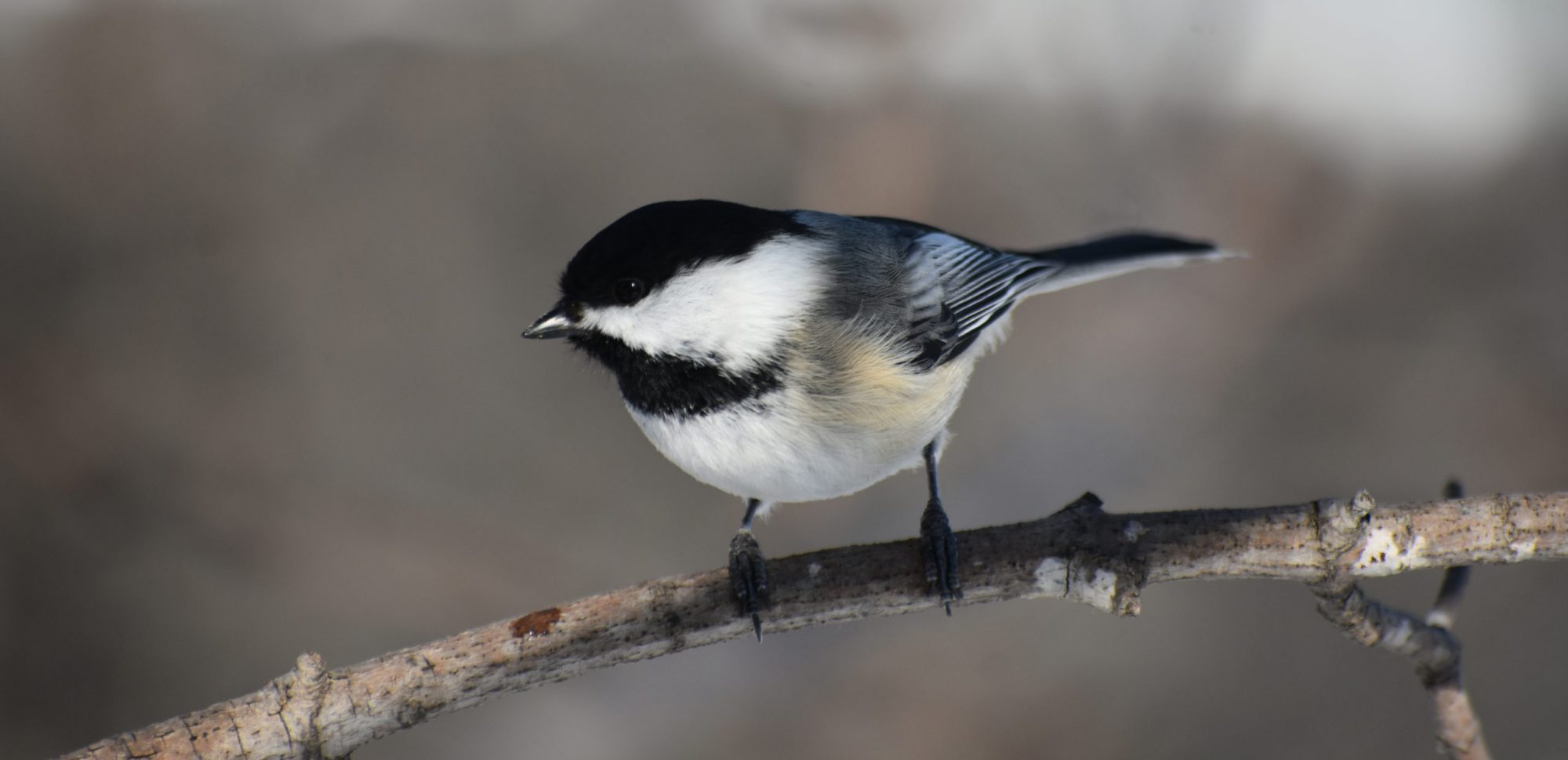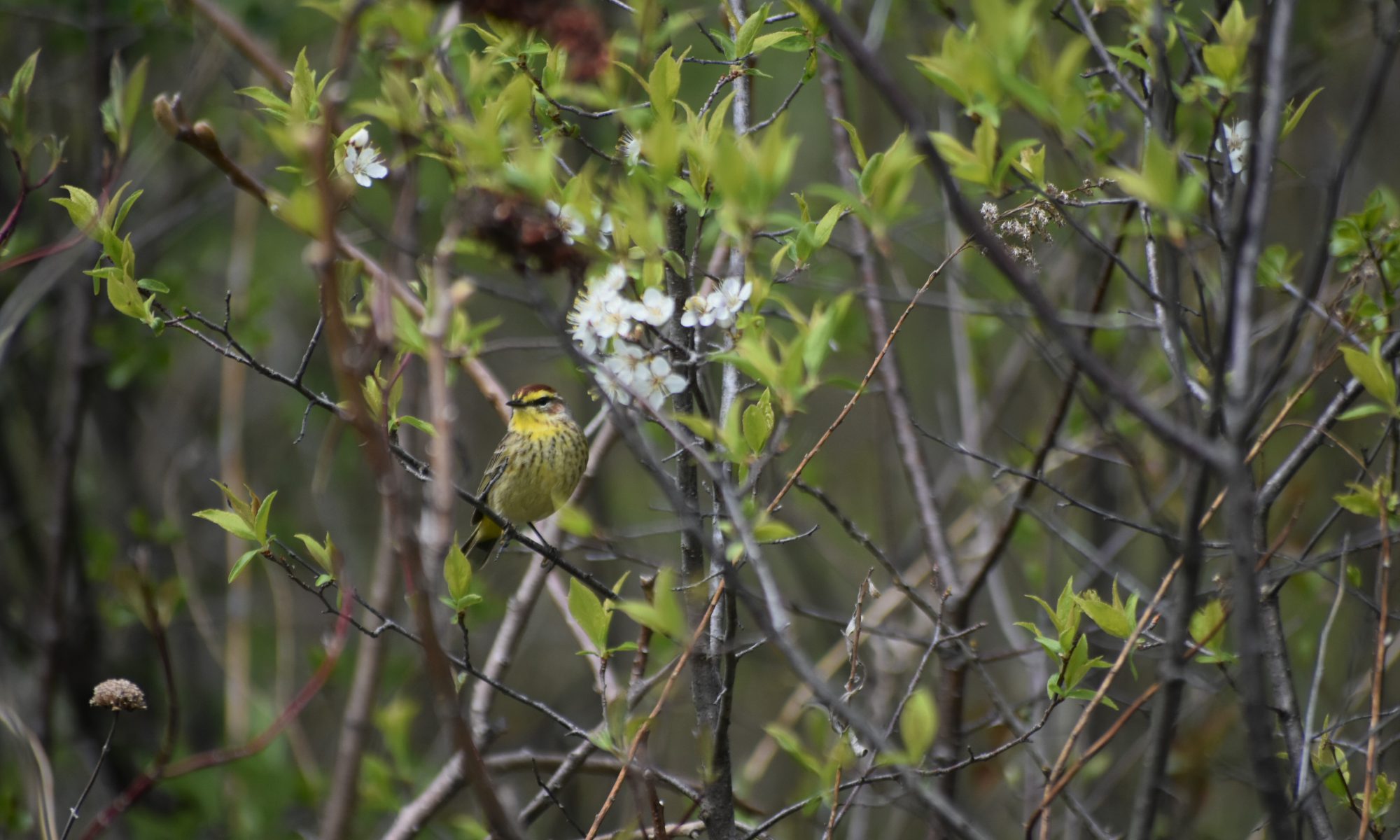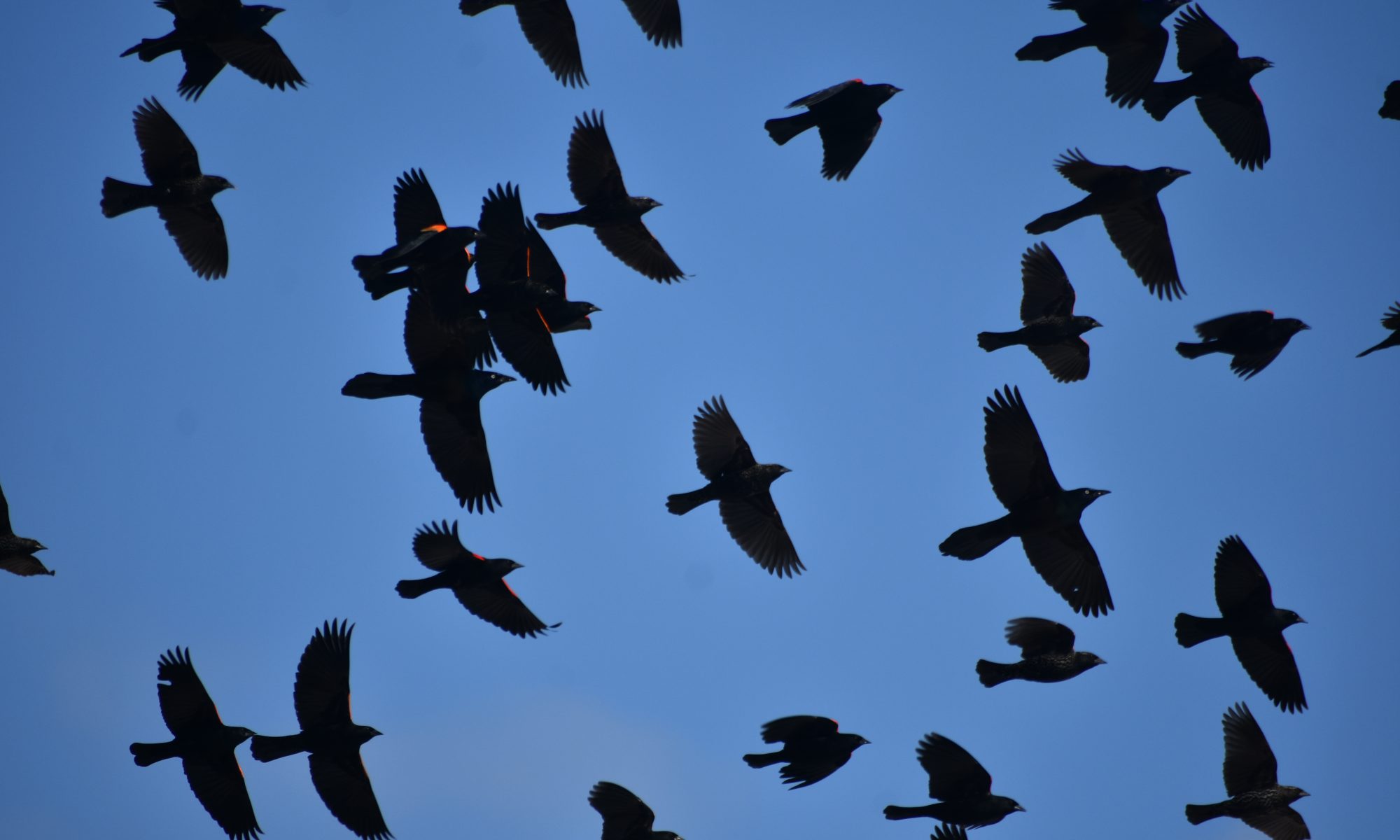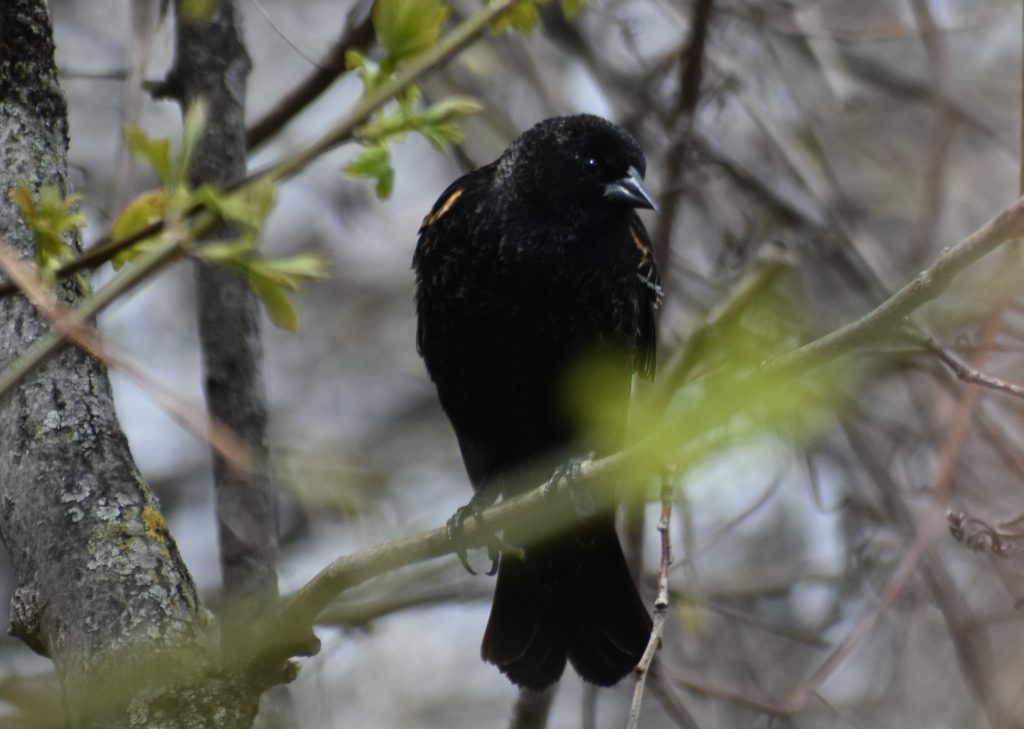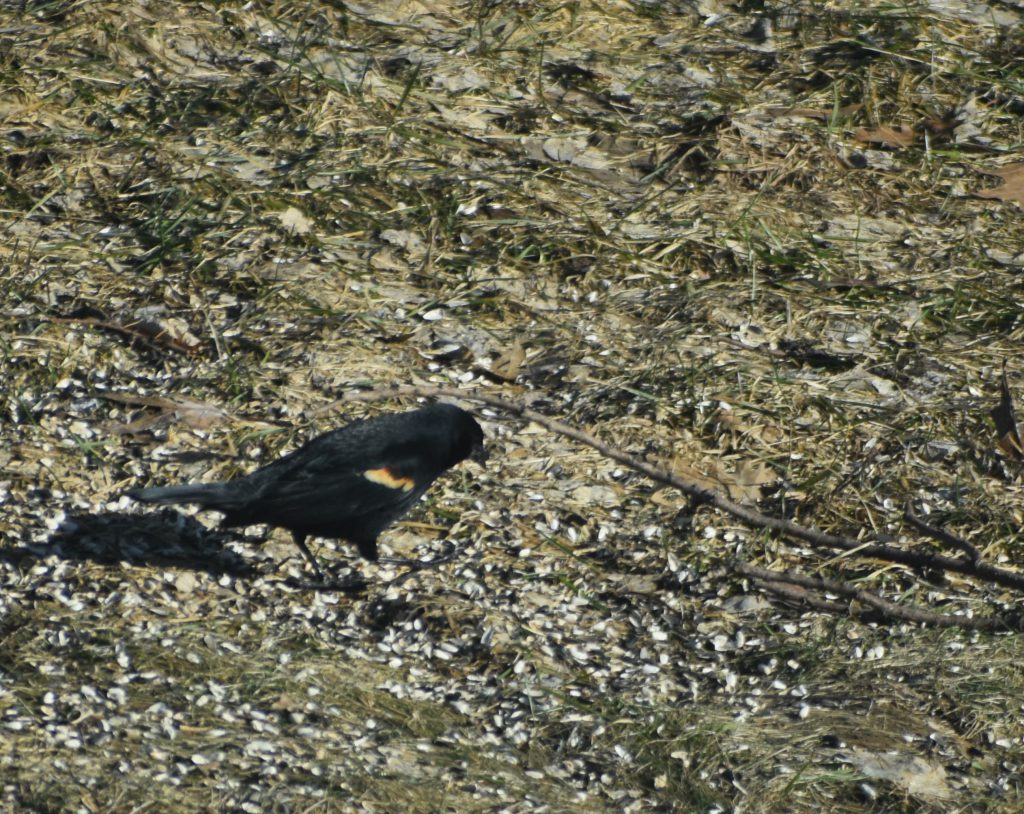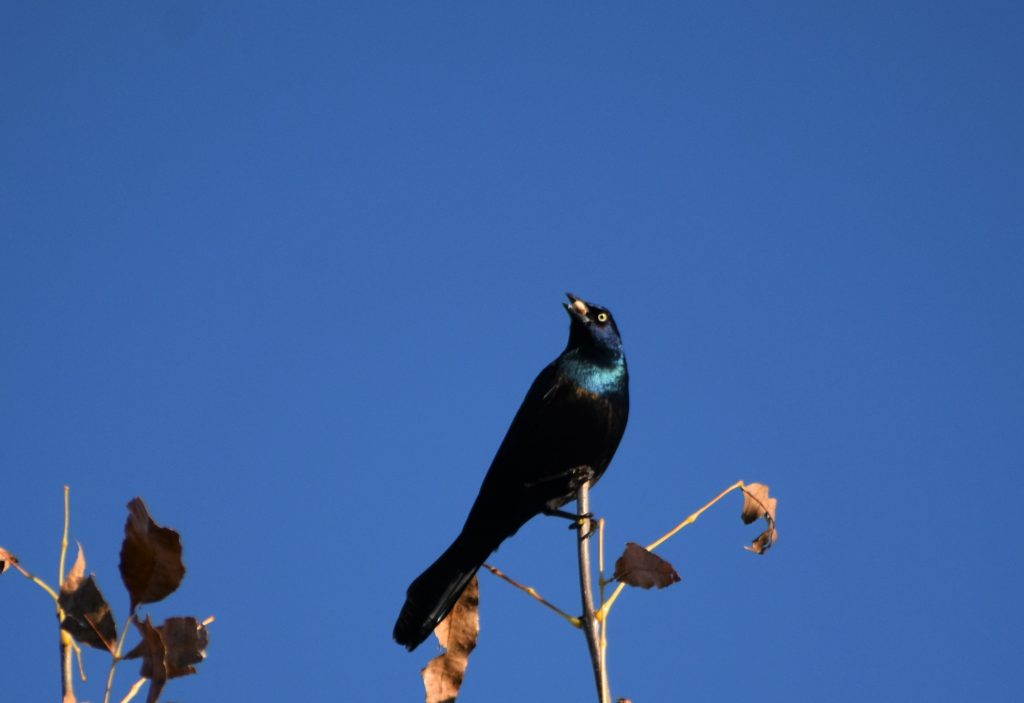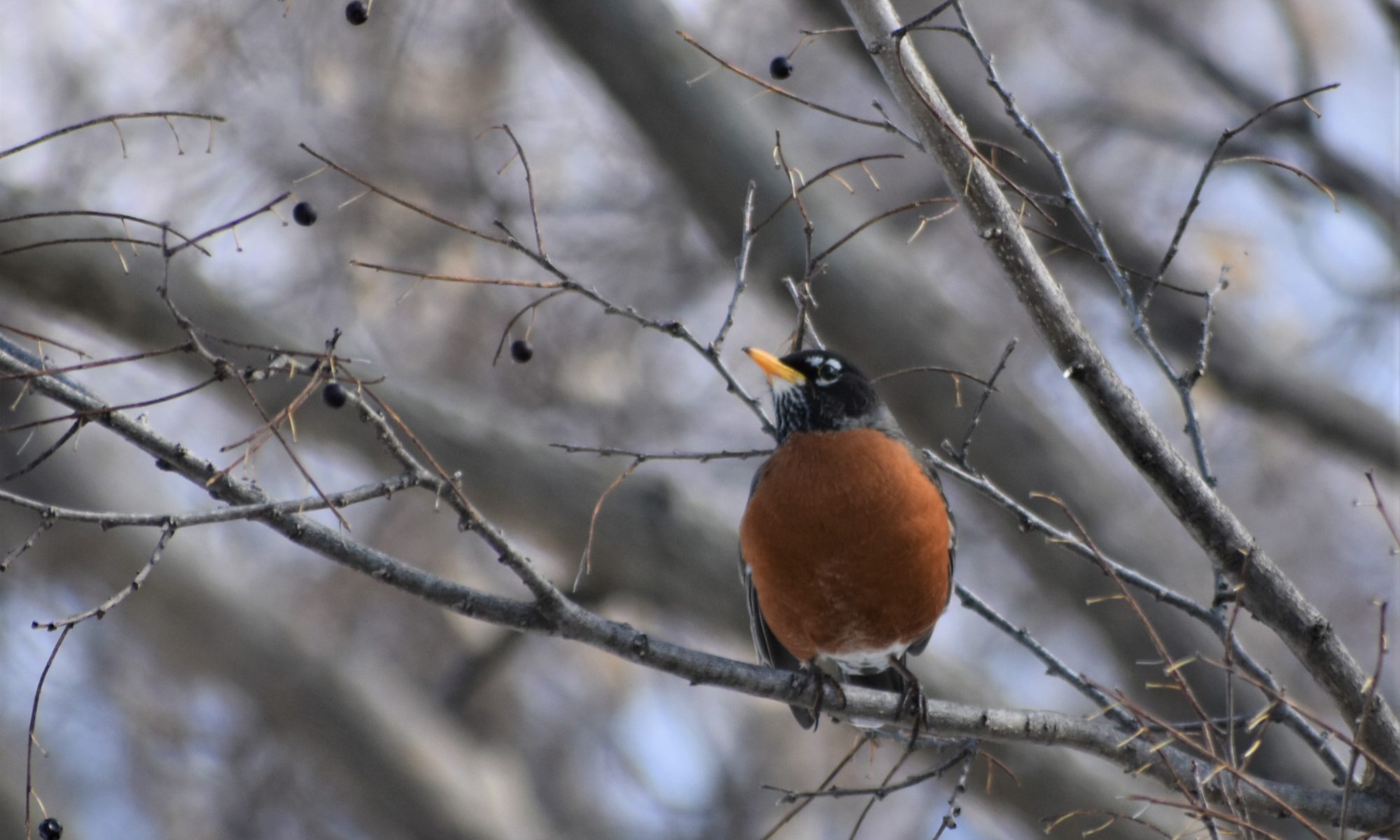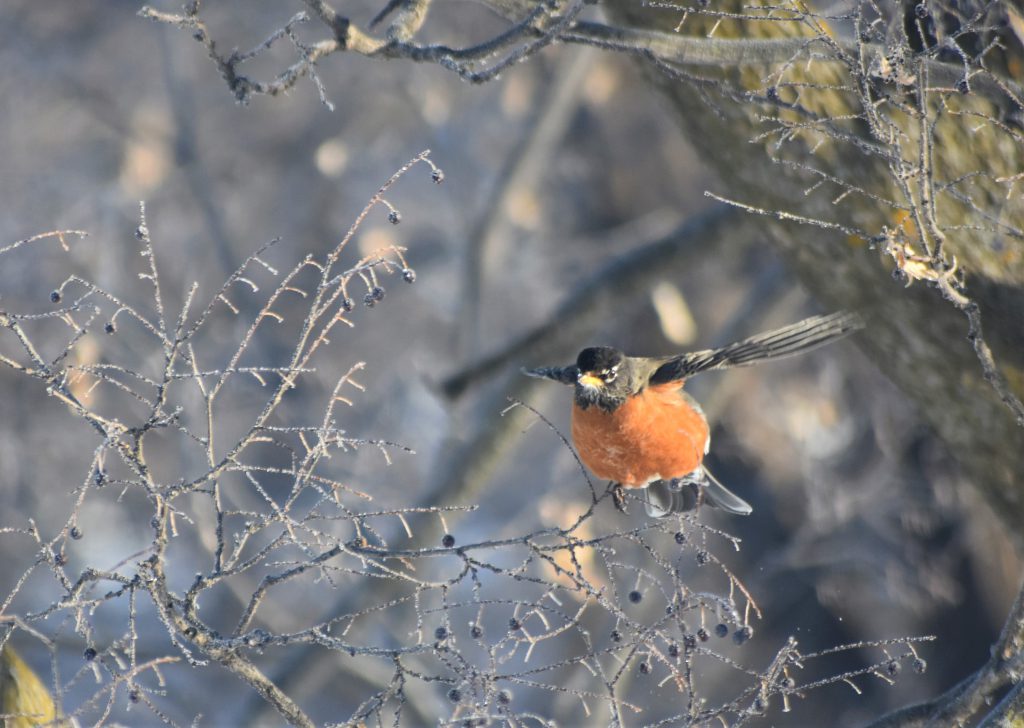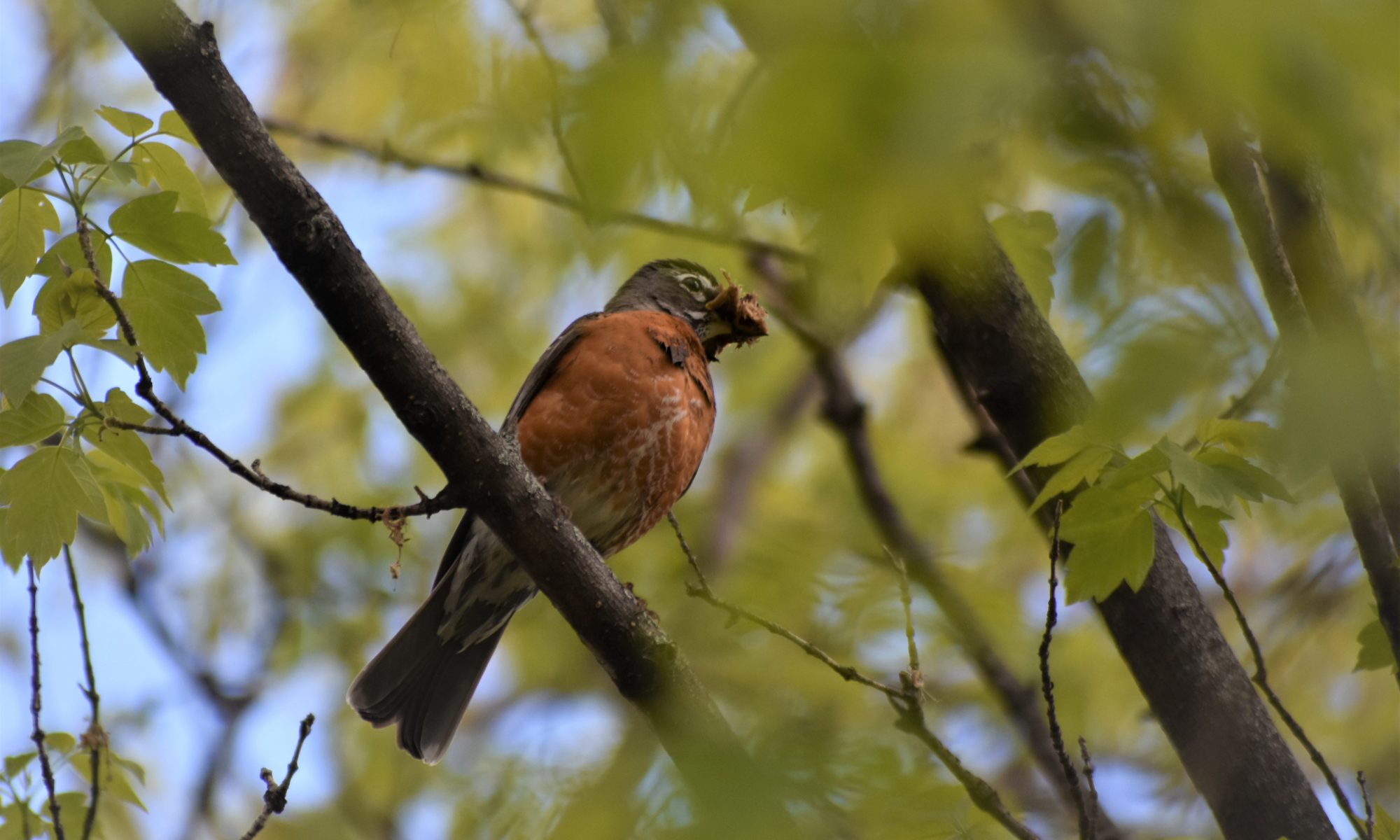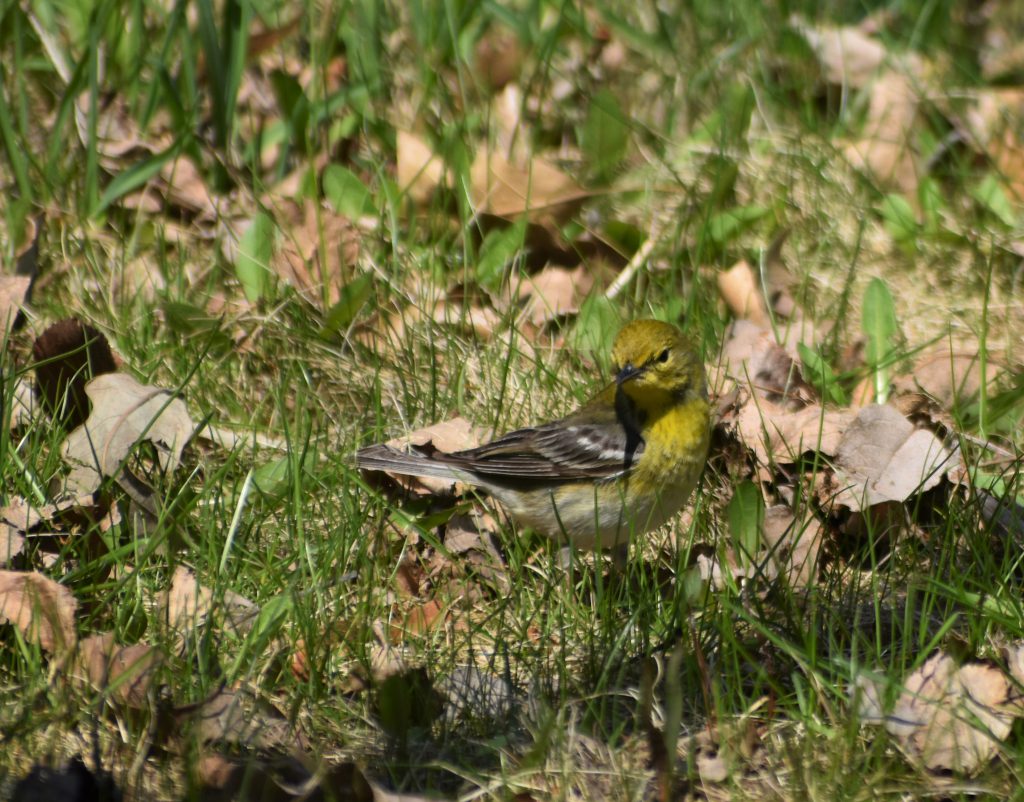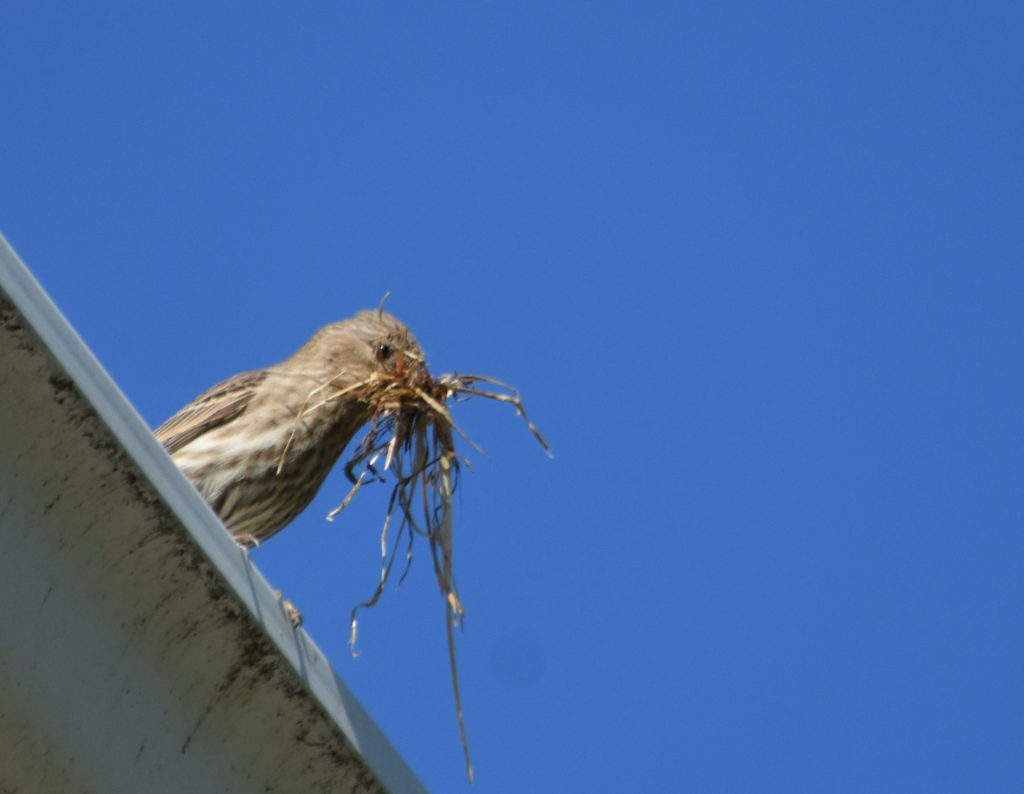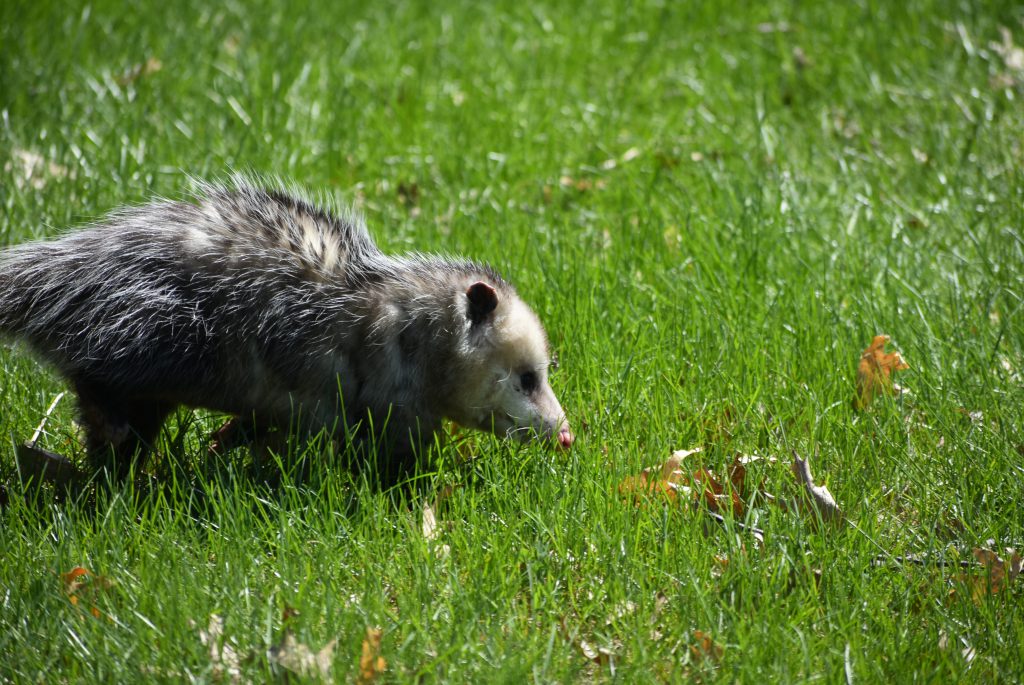This past Saturday was the Big Day of birding, as I mentioned in my previous post, and this provided the perfect excuse to get out of the house and go birding! I decided to kill two birds with one stone (figuratively speaking, of course), by participating in the Big Day and going to a place I’d been hoping to visit this spring – Frontenac State Park. It’s known as the Warbler Capital of Minnesota, and is the ideal place to hit during migration season, featuring prairie, forest, and shoreline habitat as well as a wildlife observation blind. A few family members and I drove several hours to spend the day there!
First, we hit the Prairie Loop Trail, which is 2.8 miles long (I’m not the best hiker, so we didn’t want to go for the 6-mile loop!). There weren’t many birds there, though I did see a Rose-breasted Grosbeak, some Brown-headed Cowbirds, a Turkey Vulture, a Gray Catbird, and lots of Tree Swallows.
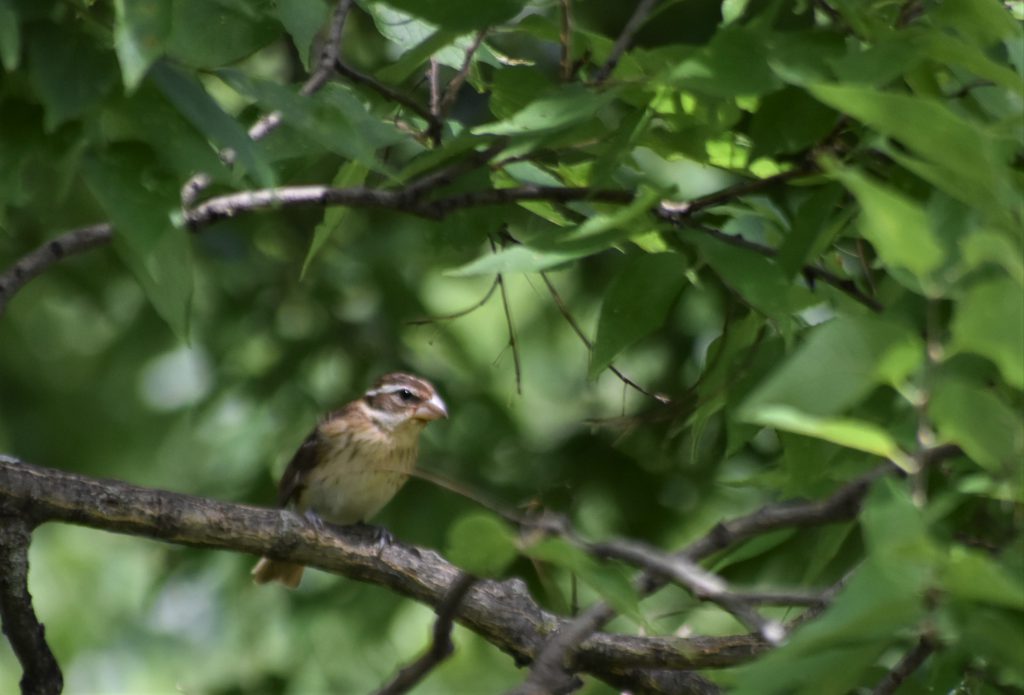
About halfway along the trail, we came to the wildlife observation blind, which is on the shore of the Pheasant Valley Lakelet. There, we spotted a pair of Canada Geese with eight goslings, a napping Wood Duck, a Sandhill Crane, and two new species of sandpiper for my life list – Solitary Sandpiper and Greater Yellowlegs.
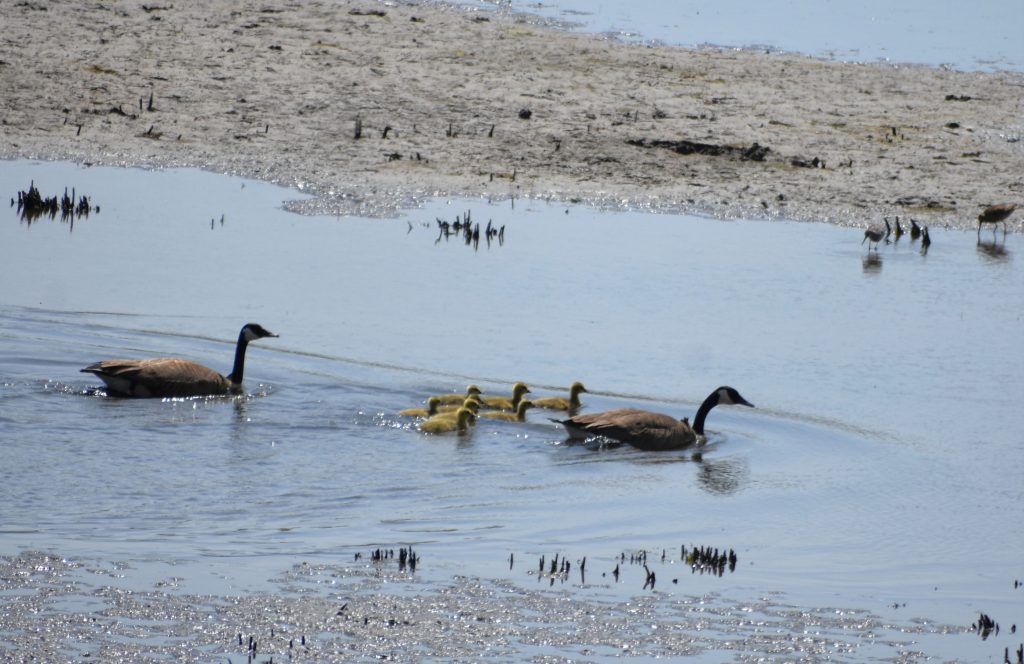
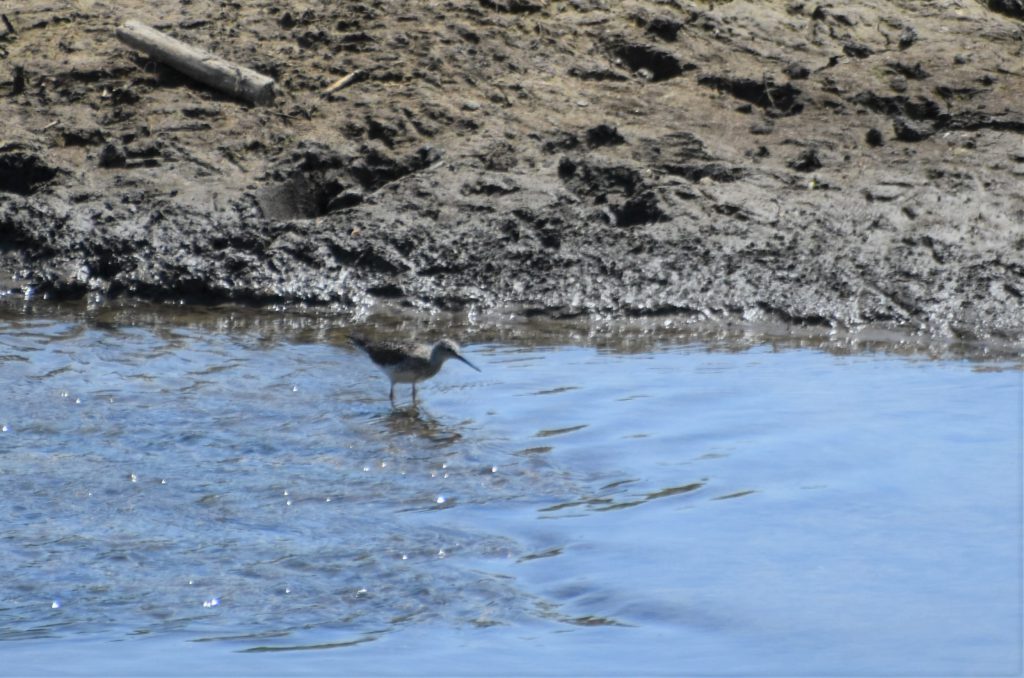
I even saw a tree not far away with an adult and juvenile Bald Eagle perched in it, which was awesome:
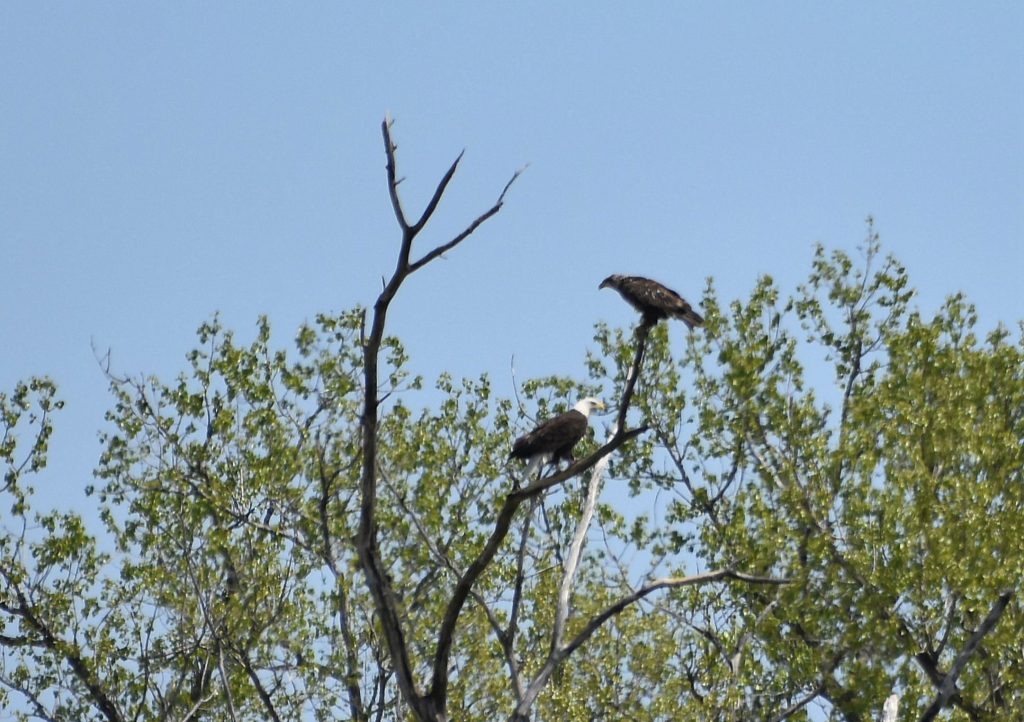
Then we moved on, with a ‘fun little adventure’ to recover my notebook (with a list of all the birds I’d seen on the trip so far) when I realized I’d dropped it somewhere on the trail; and a blister in my shoe. It was worth it, though, when I saw my third new species of the day – a Field Sparrow, one of the few sparrow species I can readily identify. I’m terrible with sparrows!
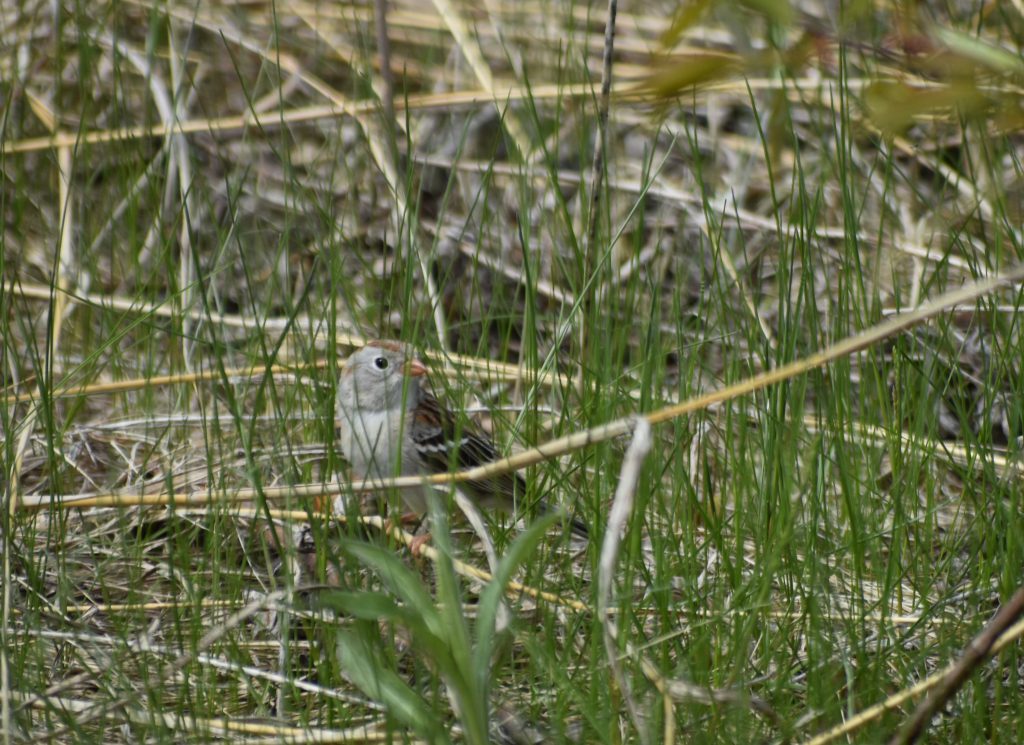
Then we went on the 1.4 mile Sand Point Trail, which had no new species on it, and though we’d planned on doing one more trail before heading home, we were all so tired from the events of the day that we cut it a little short. I didn’t see any new warblers, like I’d expected, but it was well worth it anyway!
